For the past 6months we have been examining the home culturing of primary foods for our upcoming fish breeding endeavors. With this background knowledge we are ready to make our first jump into fish breeding. Therefore, for our initial exposure into home fish breeding, I though that we should examine a species that everyone is familiar with and one that many people have had success with, even though many were unaware they were breeding fish at home.
The Neon Gobies
These diminutive fish make wonderful additions to mini-reef tanks; they are brightly colored, highly active, eat almost any food type, live in small groups, and often unbeknownst to their owners spawn quite regularly in rock caves. The offspring of neon gobies are perfectly sized for us to provide them with the initial foods we are familiar with. Raising these fry can give the aquarist valuable experience, which may lead to tackling more difficult ornamental fish. In this month’s column, I have asked Dr. James Van Tassell and Naomi Delventhal, two recognized experts in the field of goby research to provide an in-depth background on these wonderful fish and explains the ins- and-outs of home goby breeding.
Introduction
(P1)Gobies belong to the suborder Gobioidei, one of the most diverse groups of the Percomorphs, with approximately 2121 species in 268 genera. They represent 5-10% of all teleosts (bony fishes), with species occurring in (P2) marine, fresh, and brackish water environments. Both the smallest extant vertebrate, Trimmatom nanus (Winterbottom and Emery, 1981), with a length of 8.0 mm SL for gravid females, and the lightest weight vertebrate, Schindleria praematura (Schindler, 1930), with a maximum weight of 8 mg (Bruun, 1940), belong to the suborder. Some gobioids are amphidromous, returning to their freshwater streams by traversing the face of 130 m waterfalls (Fitzsimons and Nishimoto, 1990). Gobioids occupy a diverse variety of marine habitats including open water, sandy or rocky biotopes, (P3) tidepools, caves, sponges, and mudflats. They are found at depths ranging from 0 to 500 meters and in temperatures ranging from 70C for Leucopsarion petersi Hilgendorf (Matsui, 1986) to 400C for Chlamydogobius eremius (Zietz, 1896), (Glover, 1973).
The New World goby fauna is dominated by the American Seven-spined gobies (tribe Gobiosomatini). The tribe contains 24 of the 26 New World genera and thus represents about 40% of the New World gobioid genera with about 120 species. They are found in the Atlantic from Massachusetts to Argentina and in the Pacific from southern California to Chile. They inhabit both estuarine and marine environments and every type of substrate type possible. Most of the species are found in the Caribbean region where they have evolved to occupy the many niches available in the diverse coral reef habitat. Perhaps the best know members of the group are the (P4) Neon gobies (now placed in the genus Elacatinus ). They occur either in association with sponges or corals with about 14 species currently described, and more on the way! (P5) Elacatinus lori was just described from Honduras and Belize. The description can be found in an online journal Zootaxa at http://www.mapress.com/zootaxa/2002f/zt00106.pdf. All possess a bright neon stripe running horizontally on the body and those that live on coral exhibit cleaning behavior; maintaining cleaning stations and removing ectoparasites from other fishes.
The classification of this group is complex and undergoing changes. It is beyond the scope of this article to explain in detail but for purposes of this article I’ll separate the old genus Gobiosoma into two genera (P6) Elacatinus and (P7) Gobiosoma and we’ll divide Elacatinus into two subgenera Elacatinus and (P8) Tigrigobius. If you want to keep up with the changes or find out more details go to my web site http://gobiidae.com and check out the history section.
The Neon Gobies ( Elacatinus and Gobiosoma )
Elacatinus (the Neon gobies) are brightly colored, generally somewhat active swimmers, and great for reef aquaria. They are also easy to breed and have been bred for many years for the aquarium trade. Most species also hybridize readily producing an even greater array of color patterns. You will generally find (P6) Elacatinus oceanops, (P9) E. prochilos, (P10) E. puncticulatum, and (P11) E. horsti in the aquarium trade.
The subgenus Tigrigobius is a very diverse group of generally coral and/or rock reef fishes. They may have vertical bars such as the Wide-banded cleaner goby (P12) ( T. limbaughi ) and the (P13) Narrow banded cleaner goby ( T. digueti ) from the east Pacific that inhabit rocky habitats or the(P14) Green goby ( T. multifasciatum ) which lives under long spined sea urchins in the Atlantic. A variety of other color patterns also exist such as is found in (P15) ( T. saucrus ), (P16) ( T. gemmatus ) and (P17) ( T. macrodon ).
The genus Gobiosoma contains about 17 species. Most of these fishes are estuarine living on sand or mud bottoms in association with rocks, shells, or wood pilings. They tend to be light brown with diffuse bands and bars. The Atlantic species include ( G. bosc ), (P18) ( G. grosvenori ), (P20) ( G. spilotum ), and in the Pacific (P19) ( G. paradoxum ) to mention a few.
All of the species of Elacatinus and Gobiosoma are great in the aquarium. They’re not shy or reclusive and are all easy to breed.
Breeding husbandry for Neon Gobies
Elacatinus oceanops were among the first marine fish to be successfully bred by aquarists, and they (as well as other Elacatinus and Gobiosoma species) remain among those most frequently propagated by amateur and commercial breeders. Due to their small adult size, willingness to spawn captivity, and relatively large, demersal eggs, these small gobies are ideal candidates for the beginning breeder of marine fishes.
A ten gallon tank is suitable for breeding Elacatinus. One technique is to use a (P21) Lustar breeder box with a transparent front panel for easy viewing; the heavy plastic screening does not clog and is easy to clean. Use a salinity of about 30ppt (specific gravity 1.021). The brood stock can be obtained through collections, local dealers, and mail order. Many local dealers can “special order” species they don’t usually stock. It’s usually a good idea to start with about six adults, since it is not always easy to determine their sex by inspection. Place two together in a tank and see if they get along – if they fight too much they are either not a pair or not compatible. It’s often helpful to combine individuals of slightly different size.
The adults should be fed at least three times a day – more often is even better. Flake foods can be used to keep these gobies alive and healthy, but they generally don’t work very well for conditioning. Many breeders like to use a gel formula made with various ingredients (e.g. fresh seafood, vegetables, marine algae, Ziegler’s salmon starter and a multivitamin blended together and mixed with unflavored gelatin. Another good food is a mixture of finely chopped clams, shrimp, squid and capelin roe. Frozen enriched Artemia can be fed on occasion. In addition, I like to use live blackworms occasionally – gobies love them and they are good for conditioning. The key is to feed a wide variety of food and as often as possible.
Spawning caves
The gobies spawn in small caves; a short length of ½-inch diameter PVC pipe makes a great substitute. You may be lucky enough to witness the actual spawning event; if not, the first indication that spawning has occurred will be the male’s constant entering and exiting of the (P22) PVC cave for the purpose of guarding and fanning the eggs. The eggs hatch in about 3-7 days (depending on the species and temperature) (P22.A, B, C). When the eggs are ready to hatch, the eyes will be fully pigmented and the yolk sack will no longer be visible. Place the PVC tube in a small cup in the water (being careful not to let air touch the eggs) and transfer it to the rearing tank.
Larval Rearing Tank
The sides of the 10-gallon larval rearing tank should be painted black (the front can have a sheet of black paper taped to it to be removed for viewing). Light should come only from the top, as this is necessary to orient the larvae for feeding. The tank should be lightly aerated with a ceramic airstone. Too much aeration will cause the larvae to be whipped about in the tank, but too little will promote stagnation, and allow the rotifers to concentrate only in certain spots. The rearing tank should have the same water chemistry as the breeding tank – a water exchange between the two tanks prior to moving the eggs will help ensure this. A light flow of water produced by a pipette about the time the lights normally go out in the evening will simulate the male’s fanning and induce the eggs to hatch.
Feeding The Larval Fish
Larvae should be fed the morning after they hatch. (P22D) Add one liter of Isochrysis galbana (cultured under fluorescent lighting according to protocol outlined by Hoff and Snell (1987) and about 40,000 rotifers (10 rotifers per milliliter). (Rotifers are not difficult to culture at a density of about 100-250 per ml in a ten gallon aquarium or large Rubbermaid container with a salinity of about 25ppt (specific gravity 1.017). They can be fed cultured Isochrysis or a combination of Culture HUFA from Salt Creek, Inc. and concentrated Isochrysis paste from Reed Aquaculture, Inc.) Rotifer density is estimated by taking several 1 ml quantities of the rearing water with a pipette and counting the rotifers under magnification; an experienced breeder can estimate densities without counting. Keep the rotifer density in the rearing tank the same, and add about 1 liter of Isochrysis daily (just enough to keep the water tinted slightly brown). Every 3-4 days change 50% of the water. Use a length of airline tubing to siphon water out of the tank; to refill the tank slowly siphon new water into the tank from a suspended bucket.
Introduce a small amount newly hatched Artemia about 15 days after the larvae hatch. If the larvae are able to eat them, their bellies will turn pink-orange and bulge. After 5-10 days (when all the larvae have pink-orange bellies) switch to Artemia exclusively. At this time add a sponge filter to the tank to help maintain water quality. Depending on the temperature the larvae will settle in 20-30 days and start acting like miniature gobies. Some species (e.g. E. puncticulatus ) take longer, perhaps 50-60 days. After this point dry food may be introduced. For information on commercial culture of gobiid fishes see “A system for laboratory of commercial culture of gobiid fishes: by Todd Gardner and James L. Van Tassell in SeaScope Vol 18 2001.
To summarize by Frank Marini
The seven spine gobies are great inhabitants for a reef-style aquarium. Their diminutive size, coupled with their willingness to breed in captivity make them an excellent choice for a home fish breeder. While determining sexes of these fish is somewhat difficult, you can overcome this issue by providing multiple fish. Established male gobies will find an appropriate nesting site, and breed with a willing female. Males will guard the egg masses and provide a minimal amount of parental care, keeping the male in the presence of the eggs will increase the likelihood of hatching success. Once hatched, goby fry can be established on phytoplankton-enriched rotifers followed by a weaning onto Artemia. While the goby fry are small, they are robust feeders and grow quickly. These above reasons make neon gobies an excellent candidate for a first endeavor into home fish breeding.
In upcoming months for the Breeder’s Net column, we will continue to exam the home culture of microfoods (such as bivalve veligers and copepods), which will provide us with progressive smaller and nutritionally diverse foods for tiny fish fry. We will also delve into some commonly bred marine ornamental fish. With the success of our home breeding of gobies, I will also be asking Dr. Van Tessell for future columns on additional goby species, such as (P23)_ Evermannichthys_ and (P24) Rizor that live inside sponges, (P25)_ Nes_ that live in burrows with shrimp, and (P26) Microgobius tube dwelling species that live in soft mud and have brilliant iridescent colors.
Affiliations
- Dr. James L. Van Tassell1: 1 Dept. of Biology, 114 Hofstra University, Hempstead NY 11549, email: [email protected]
- Naomi Delventhal: 2 International Goby Society, PO Box 329, Richland Center, WI 53581, email: [email protected]


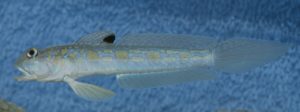
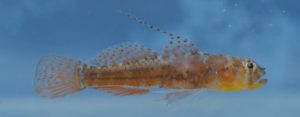



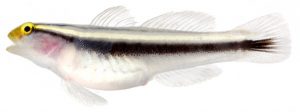

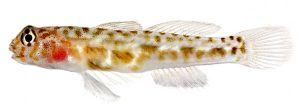

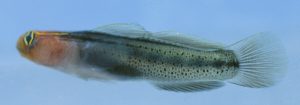

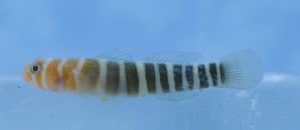

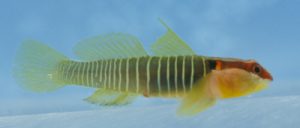
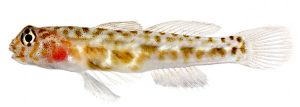
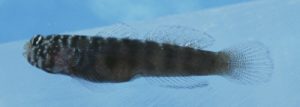

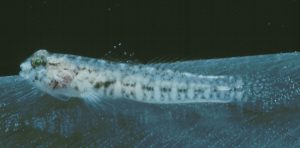
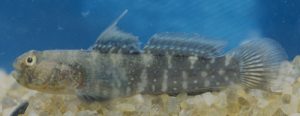


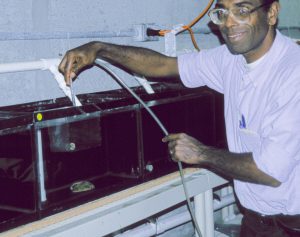
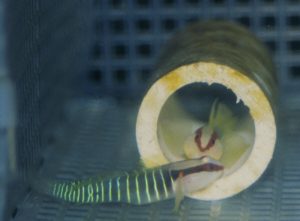

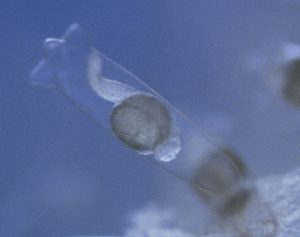
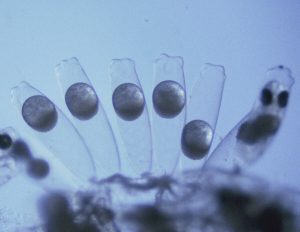

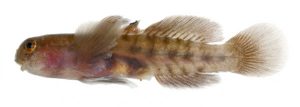
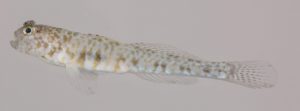
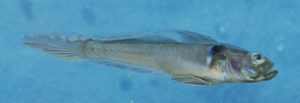

0 Comments